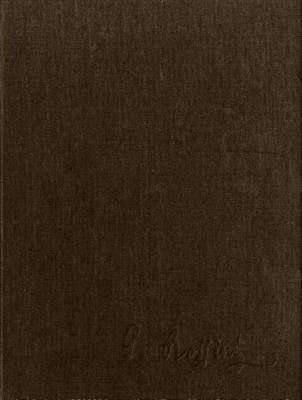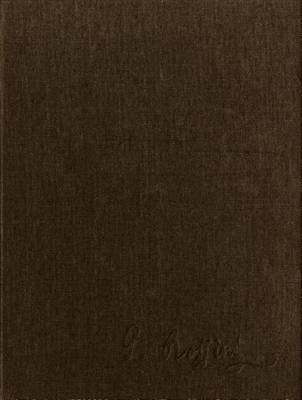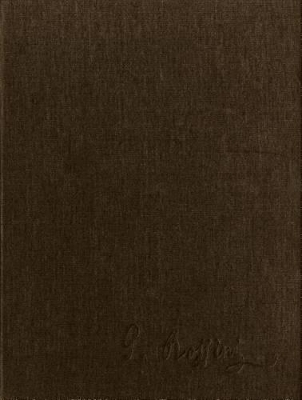The Critical Edition of the Works of Gioachino Rossini
1 primary work • 3 total works
Book 7
In 1857 Rossini presented "Musique Anodine", a prelude and six songs, to his wife Olimpe, in gratitude for her care during his long illness. This was the 13th in a collection of 14 unpublished albums. The first was "Album Italiano", a dozen pieces for one, two or four voices with piano. Among the best-known of these pieces is "La Regata Veneziano", three canzonettas for mezzo-soprano in Venetian dialect, in which the heroine encourages her racing gondolier. Another song, "Le Gittane", has never before been published with its Italian text. Based on the composer's own manuscripts, this edition aims to restore his precise musical notation. It includes the musical score and commentary in one volume. Appendices contain earlier versions of six songs, some with different texts from the final versions.
Section II/6
This brilliant cantata was first performed on January 1, 1847 as part of a day of grand festivities honoring the recently elected Pius IX, who was widely welcomed in Europe as a reforming pope. Not heard again until it was revived in 1992 to great acclaim, the "Cantata" calls for large performing forces including four solo singers (STTB), mixed chorus with solo voices, full orchestra with serpentone, and stage band.
Rossini, in poor health at the time, had only reluctantly accepted the commission to compose the "Cantata." To facilitate the task he based five of the movements on pieces from his Neapolitan operas "Armida" (1817) and "Ricciardo e Zoraide" (1818), and the Parisian opera "Le Siege de Corinthe" (1826). These he modified and joined together with newly-composed recitatives, the whole set to a new libretto by Count Giovanni Marchetti. A spectacular work in its own right, the "Cantata in onore del Sommo Pontefice Pio IX" also provides an illuminating example of Rossini's recompositional practices in adapting previous compositions to new contexts."
Rossini, in poor health at the time, had only reluctantly accepted the commission to compose the "Cantata." To facilitate the task he based five of the movements on pieces from his Neapolitan operas "Armida" (1817) and "Ricciardo e Zoraide" (1818), and the Parisian opera "Le Siege de Corinthe" (1826). These he modified and joined together with newly-composed recitatives, the whole set to a new libretto by Count Giovanni Marchetti. A spectacular work in its own right, the "Cantata in onore del Sommo Pontefice Pio IX" also provides an illuminating example of Rossini's recompositional practices in adapting previous compositions to new contexts."
Section 1: operas
"Il Viaggio a Reims, Ossia l'Albergo Del Giglio d'Oro"
by Gioacchino Rossini
Published 15 October 2000
Rossini composed his last Italian opera to celebrate the coronation of the French king Charles X in 1825. A virtuoso "tour de force", it was conceived for the greatest voices of the time and calls for an exceptional cast of fourteen soloists: three prima donna sopranos, an alto, two tenors, four baritones and four basses. One of the score's glories is the audacious "Gran Pezzo Concertato" for the 14 soloists. In the Finale national toasts derived from patriotic songs set the driving music awhirl. Rossini permitted only four performances of "Viaggio", later reusing half the score for "Le Comte Ory". The manuscript sources were presumed lost until part of the autograph was recovered in the 1970s at the Rome Conservatory, while other sources were found in Paris (including original performing parts) and Vienna. The identification of a missing chorus completed the restoration of this magnificent work to the repertory. Along with the reconstructed score, the critical edition provides historical information about the libretto's relationship to French politics of the era and details on the first production.


